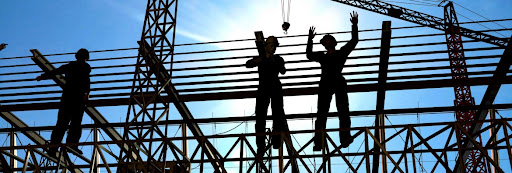 While companies using cranes for years are fairly well-versed in their upkeep and maintenance, Integrity Crane And Hoist says that it takes time to fully get up to speed on the process. Many new crane owners are not, and they have lots of questions. Today, the experts from ICH answered a few of these for the absolute beginner.
While companies using cranes for years are fairly well-versed in their upkeep and maintenance, Integrity Crane And Hoist says that it takes time to fully get up to speed on the process. Many new crane owners are not, and they have lots of questions. Today, the experts from ICH answered a few of these for the absolute beginner.
Q: Why should I have an overhead crane inspection?
Integrity Crane And Hoist: Safety is the obvious first answer, but another important reason: it’s required. OSHA mandates that all in-service crane and hoist systems be inspected at least once each year. This is because everyday wear and tear can have a significant impact on components, many of which you can’t see with just a casual visual inspection. Failure of any of these parts puts your team at risk and can lead to expensive lawsuits as well as reputation damage for your company.
Q: Who should perform these inspections?
Integrity Crane And Hoist: All crane inspectors, according to the Crane Manufacturers Association of America, must have no less than 2000 hours of hands-on, direct experience in the repair, maintenance, service, and modification of cranes and hoists. Anyone performing an overhead crane inspection must also be trained in local, state, and federal codes, documentation processes, industry terminology, and safety and design standards.
Q: When is the best time to have my crane and its components inspected?
Integrity Crane And Hoist: Your first overhead crane inspection takes place at installation. OSHA 1910.179 mandates that this equipment is compliant with the provisions put forth in that section. Some machinery also requires a load test. During this, your crane inspector will test your equipment load rating (at no more than 80% of its maximum). All findings during this and subsequent inspections must be logged and signed by the inspector.
Q: Why am I required to perform a visual inspection before each shift?
Integrity Crane And Hoist: A functional test inspection also keeps you in compliance with OSHA standards. This is a visual assessment that looks for maladjustment, leakages, deterioration, excessive wear, distortion, hook deformation, and other issues that would render your equipment potentially dangerous.
Q: What is the difference between a frequent inspection and a periodic inspection?
Integrity Crane And Hoist: Your initial test and daily examinations are not the only types of inspection your machines need. Frequent inspections may happen weekly or monthly, and the frequency of which depends on how you use your equipment and what’s listed on its paperwork. Periodic inspections are also equipment-dependent, but these are typically performed quarterly. Each of these looks for malfunctions, but your periodic inspections go a bit further by testing the electrical components, checking for corrosion, and evaluating the overall condition of the brake system.
If you still have questions, your overhead crane inspection professional at Integrity Crane And Hoist can walk you through the process. Our dedicated staff is fully trained and committed to helping you create a safer working environment for your employees.
Integrity Crane And Hoist is a leader in the material handling industry. With nearly 30 years of experience, our team can handle repairs and testing, maintenance, and upgrades.